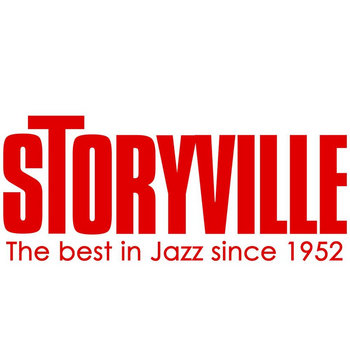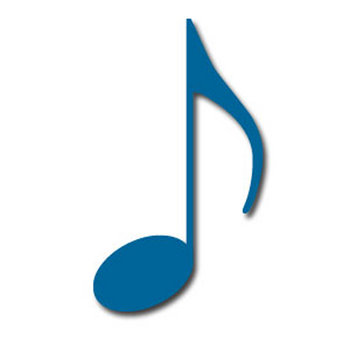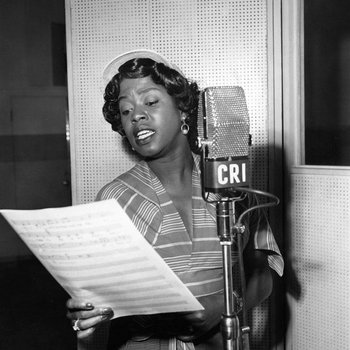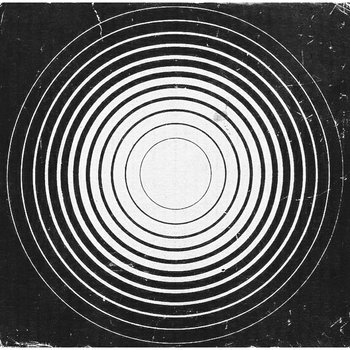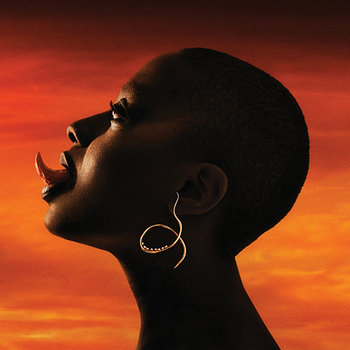The Jazz Singers (original) (raw)
LISTS The Jazz Singers By George Grella · October 17, 2024 
As long as there has been jazz, there’s been people singing jazz. Jazz singing has usually been perceived as something ancillary to the core jazz tradition, but the truth is that it’s been at the music’s core from the very beginning: Louis Armstrong was not only the first jazz star as a trumpet player but also as a singer; the great tenor saxophonist Lester Young was an influence on the young Billie Holiday, and she was an influence on him—and a star in her own right. Frank Sinatra came up with jazz greats Harry James and Tommy Dorsey, learned about singing from them and other jazz musicians, and in turn was an example to follow for horn players—including Lester Young again.
Jazz began as popular music. The Great American Songbook concept came about through singers adopting a body of songs from Broadway and popular radio, and turning them into standard material passed down to other singers and instrumentalists through the generations. Just as those instrumentalists pioneered avant-garde and experimental ideas, so did singers contribute—vocalists have been an essential part of the Sun Ra Arkestra for decades. Here’s a guide to jazz singing through the past 100 years, sourced from the world of Bandcamp.
Louis Armstrong
Louis Armstrong: The Night Clubs
Louis Armstrong is, simply, one of the most important musicians in the era of sound recordings. He revolutionized jazz starting in the early 1920s with his Hot Fives and Hot Sevens recordings, and he essentially created, entirely on his own, modern American popular music—which then went on to rule the world. He did that with his voice. Before him, the style of popular singing was crooning, sweet, and strait-laced. Armstrong broke up phrases, played around with timbre—sang like he played the horn, in short. He also added plenty of humor and subversive fun, and some sly dirty thinking too. It’s no exaggeration to say that music has two eras: Before Louie and After Louie.
Billie Holiday
 . 00:10 / 00:58
. 00:10 / 00:58
The ever-loved Lady Day. Holiday’s life and career were tragically short, the pain of it in her 1959 death from cirrhosis of the liver at age 44. One of the supreme song stylists, her marvelous timbre and her simple, warm, intimate delivery turned every song into a masterpiece. The very idea of a “torch singer,” keeping a light burning for a lost lover, began with Holiday. This fine collection of mainly live recordings is from the middle of her career (1944–1951), and is full of classic material like “Detour Ahead” and the wrenching anti-lynching song “Strange Fruit,” which made her the target of government surveillance and harassment.
Ella Fitzgerald
Live at the Palladium, NYC 1951
Often (and unfairly) set in opposition to Holiday as a technician as opposed to a feeling musician, Fitzgerald began singing on the streets of Harlem as a teenager, won first prize at an amateur night appearance at the Apollo Theater, and began singing in front of Chick Webb’s great big band. Yes, her technique was superb, she had perfect intonation, fantastic articulation, her sound clear as a bell. But she had tremendous wit, style, verve, and could break hearts as hard as anyone. Fitzgerald also went easily from swing to bebop. This album is a real bootleg, a live performance that fell in between her time with Decca and then Verve records, appearing first briefly and quasi-legally in Europe, now here for all.
King Pleasure
The man with the greatest name in music (born Clarence Beeks), Pleasure had a hit with “Moody’s Mood for Love,” an early vocalese number. Vocalese was an idea pioneered by Eddie Jefferson (who wrote “Moody’s Mood for Love”), in which a singer adds lyrics to the tune and solo on a jazz recording. Named after, and built on, saxophonist’s James Moody’s solo on “I’m in the Mood for Love,” this recording was a hit for Pleasure, made him an influential figure, and features the young Blossom Dearie and Moody himself on the tenor sax.
The Rashied Ali Quartet
Eddie Jefferson at Ali’s Alley
Eddie Jefferson himself was one of the hippest, most stylish jazz singers ever. Despite his central position as a great bebop singer, he was usually out of the limelight and was murdered in 1979, at 60 years old. This live album, recorded in 1976 at drummer Rashied Ali’s loft jazz space, didn’t come out until the 21st century, and it’s a real treasure. Jefferson sings his own vocalese takes on standards, bebop classics, and modern jazz from Miles Davis and John Coltrane. It wraps up with a lovely “Moody’s Mood for Love.”
Sarah Vaughan
The sheer beauty and expressive statute of Sarah Vaughan’s voice made her a towering figure. But her musicianship was subtle and deep. She could extend a line into unexpected territory, or inflect it with tiny ornaments and rhythmic changes, an operatic approach in everything except the material and the jazz sensibility. She was also one of the great embodiments of how jazz singing can extend well into pop territory while being absolutely jazz, like this take on Marvin Gaye’s “Inner City Blues (Makes Me Wanna Holler).”
Mark Murphy
Mark Murphy’s slightly husky voice and good looks had the record companies packaging him as a pop singer with bobby soxer appeal in the 1950s. But that was never his thing, and by the ‘60s he was fully committed to jazz, trying to capture and express the Beat literary movement in song. In his long career, Murphy would read from Jack Kerouac’s The Subterraneans during live gigs, sing Latin and Brazilian music, and write lyrics to modern standards like “Stolen Moments” and “Red Clay.” So much of what he did comes together on these Latin jazz arrangements of the great Cole Porter.
Max Roach feat. Abbey Lincoln
We Insist! Max Roach’s Freedom Now Suite
Her voice was a cross between a horn and a flamethrower. The former was in the punchy phrasing, the latter was the fire within. Abbey Lincoln was one of the most prominent jazz singers of the ‘60s and beyond. For a time married to the great drummer Max Roach, the two created this seminal masterpiece, a concept jazz album as an extended meditation on racism and Jim Crow America, and a morale booster for the Civil Rights Movement. Impossible to imagine without Lincoln’s voice and impossible to forget.
Jeanne Lee
Jeanne Lee was a jazz singer who was also a great and important avant-garde artist. She sang the Great American Songbook, modern jazz tunes, and also improvised with Cecil Taylor and interpreted John Cage’s rigorous, philosophical compositions—two things at the exact, distant opposite ends of musical possibilities. This album was her solo debut, showcasing not only the delicate beauty of her voice but her musical imagination. Lee delivers lyrics, improvises at the head of a great band, and experiments with multi-tracked vocal compositions. A gem of progressive jazz.
Mose Allison
Mose Alison is one of those musicians who’s a little bit of a lot of things—but he sang and was hip, so call him a jazzer. And why not? He sang plenty of jazz tunes, like “Don’t Get Around Much Anymore” and “Blueberry Hill.” He was also just as much blues as jazz, with heapings of Southern boogie and roadhouse music, Tin Pan Alley, the whole gumbo of American songwriting up through the early rock era. Funky, moody, he was a subtle but strong influence on rock musicians, including The Clash, and his “Everybody’s Cryin’ Mercy” has passed down through the decades.
Kurt Elling
Now a veteran presence among the contemporary generation of jazz singers, Kurt Elling mixes his expressive baritone with a learned literary sensibility. He’s the leading current standard bearer of the vocalese tradition, transforming prose and poetry from the likes of Rilke, Theodore Roethke, and even Saint John of the Cross into lyrics set to tunes and solos from Wayne Shorter, Freddie Hubbard, John Coltrane, and more. This example is a tour de force combination of an improvisation from Keith Jarrett with a classic torch song, bridged by Elling’s lyrics.
José James
The Dreamer: 10th Anniversary Edition
Moving easily back and forth between straight-ahead jazz, soul, and funk, José James has one of the most distinctive voices in today’s music. His sweet-smoky baritone, the little tang he adds to words here and there, give him a sound that’s soft as velvet around more than a little attitude. This expanded reissue of his terrific early album The Dreamer adds new tracks with lyrics set to some of John Coltrane’s strongest compositions, including an amazing samba-ballad version of “Resolution” from A Love Supreme.
Veronica Swift
There’s been a lot of music made since Louis Armstrong first sang “Lazy River.” Veronica Swift has heard much of it, not just jazz and standards but heavy metal and thrash and punk. Jazz artists have always transformed popular music through their own sensibilities, and Swift grabs the music around her and makes it her own. Would any other jazz musician perform a song by Amanda Palmer? Could any other rip you to shreds with it, like Swift does?
Cecile McClorin Salvant
The first name in jazz singing in the 21st century is French-Haitian-American soprano Cecil McLorin Salvant. What makes her exceptional goes beyond her voice and chops, an exactitude to phrasing and articulation honed in the practice of baroque music. She has a sense of drama, forcefully pushing lyrics to the extreme of their meanings, and coming at familiar songs and melodies from unexpected angles. And she has comprehensive and personal taste, digging up lesser known songs and performing material from artists like Kate Bush. This live album with pianist Sullivan Fortner, a supreme accompanist, shows everything she can do, culminating in this epic performance of Fran Landesman’s amazing—and neglected—“The Peacocks.”

